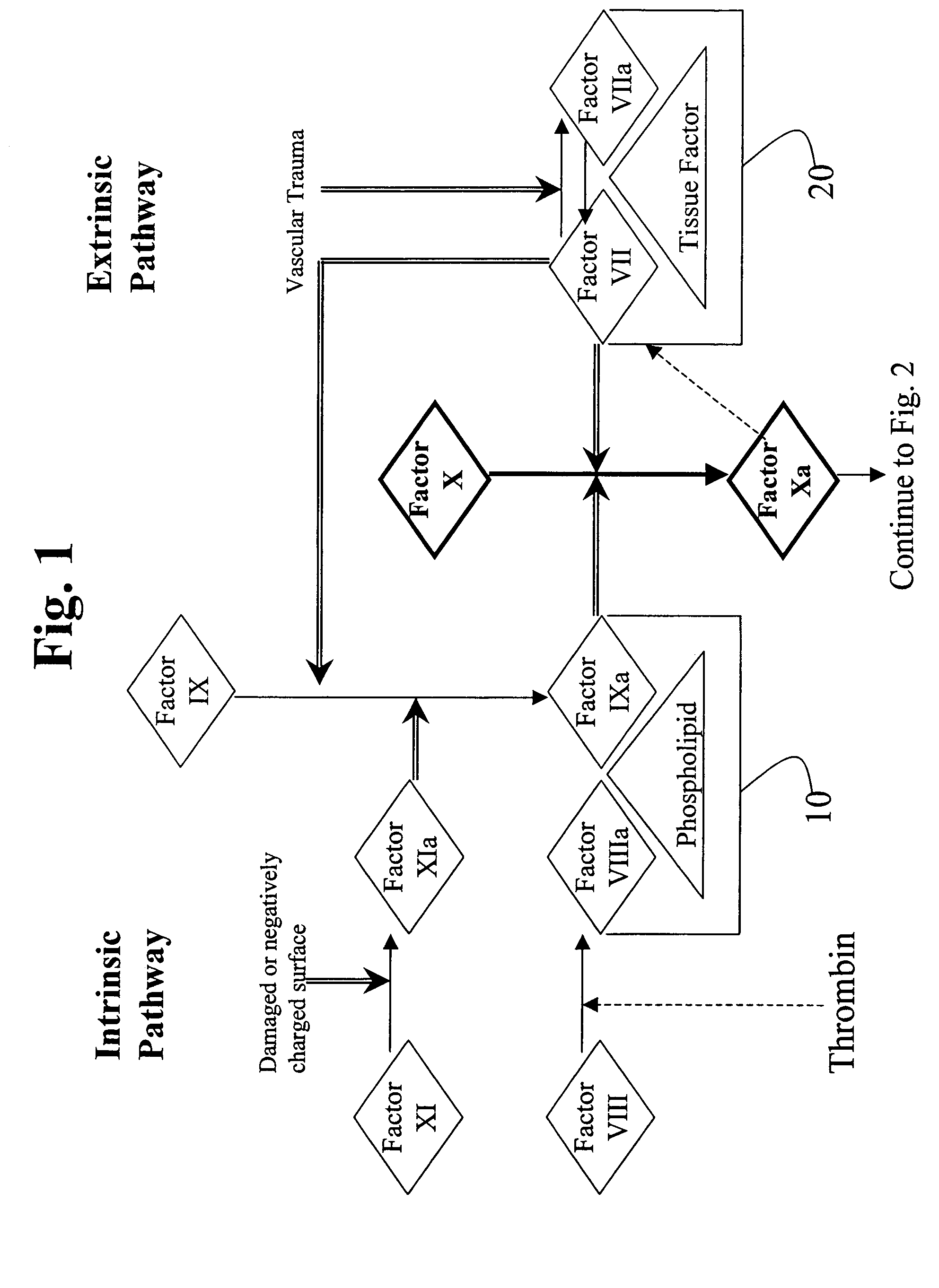Aryl and heteroaryl compounds, compositions, and methods of use
a technology applied in the field of aryl and heteroaryl compounds and compositions, can solve the problems of excessive bleeding or thrombosis, initating blood clotting by intrinsic pathways, and reducing blood flow to the affected extremities
- Summary
- Abstract
- Description
- Claims
- Application Information
AI Technical Summary
Benefits of technology
Problems solved by technology
Method used
Image
Examples
examples
[0617]LC-MS data was obtained using gradient elution on a parallel MUX™ system, running four Waters 1525 binary HPLC pumps, equipped with a Mux-UV 2488 multichannel UV-Vis detector (recording at 215 and 254 nM) and a Leap Technologies HTS PAL Auto sampler using a Sepax GP-C18 4.6×50 mm column. A three minute gradient was run from 25% B (97.5% acetonitrile, 2.5% water, 0.05% TFA) and 75% A (97.5% water, 2.5% acetonitrile, 0.05% TFA) to 100% B. The system is interfaced with a Waters Micromass ZQ mass spectrometer using electrospray ionization. All MS data was obtained in the positive mode unless otherwise noted. 1H NMR data was obtained on a Varian 400 MHz spectrometer.
example e-1
7-(4-tert-Butyl-phenoxy)-1-cyclopentylmethyl-isoquinoline-3-carboxylic acid
[0618]
[0619]To a stirring of solution of H-Tyr(O-tert-Bu)-OMe HCl (15 g, 52.1 mmol), NEt3 (13.1 g, 129.7 mmol) in 400 mL of DCM at 0° C. was added cyclopentyl acetyl chloride (8.4 g, 57.3 mmol). The reaction mixture was warmed to rt and stirring was continued for 45 min. Then the organic layer was washed with water, 1.0 N HCl and brine then dried over Na2SO4. Evaporation of the solvent gave 19 g of amide, which was used for further step without purification.
[0620]LCMS: 438 (M+1)+
[0621]To a stirring solution of above amide (19 g, 52.1 mmol) in 400 mL of anhydrous DCM at 0° C. was added oxalyl chloride (7.9 g, 63.1 mmol). The reaction mixture was brought to rt and stirring continued for another one hour. Then the reaction mixture was cooled to −10° C. and to it anhydrous FeCl3 (10.1 g, 62.3 mmol) was added portion wise. The stirring was continued for 12 h at rt and the reaction mixture was treated with 200 mL o...
example e-2
3-(5-bromo-thiophene-2-yl)-2(S)-{[7-(4-tert-Butyl-phenoxy)-1-cyclopentylmethyl-isoquinoline-3-carbonyl]-amino}-propionic acid methyl ester
[0629]
[0630]The title compound was prepared by treatment of Compound E-1 with (2S)-amino-3-(5-bromo-thiophen-2-yl)-propionic acid methyl ester HCl prepared from commercially available (2S)-amino-3-(5-bromo-thiophen-2-yl)-propionic acid according to general procedure A.
PUM
| Property | Measurement | Unit |
|---|---|---|
| temperature | aaaaa | aaaaa |
| temperature | aaaaa | aaaaa |
| temperature | aaaaa | aaaaa |
Abstract
Description
Claims
Application Information
 Login to View More
Login to View More - R&D
- Intellectual Property
- Life Sciences
- Materials
- Tech Scout
- Unparalleled Data Quality
- Higher Quality Content
- 60% Fewer Hallucinations
Browse by: Latest US Patents, China's latest patents, Technical Efficacy Thesaurus, Application Domain, Technology Topic, Popular Technical Reports.
© 2025 PatSnap. All rights reserved.Legal|Privacy policy|Modern Slavery Act Transparency Statement|Sitemap|About US| Contact US: help@patsnap.com



